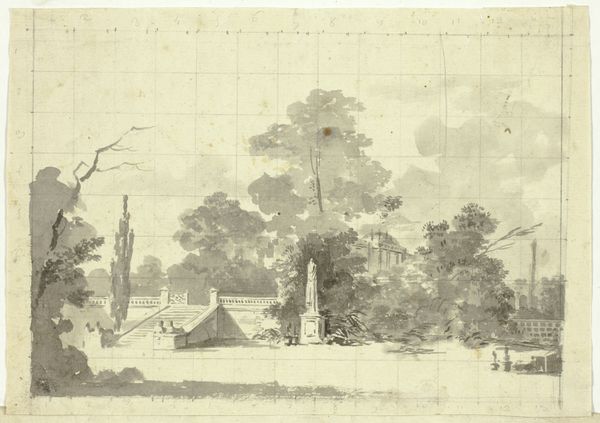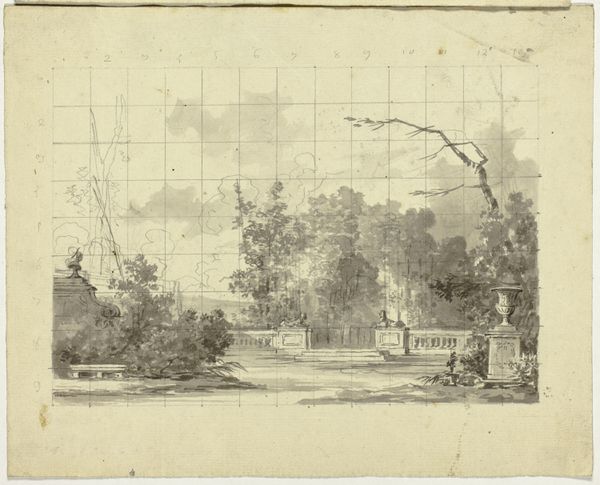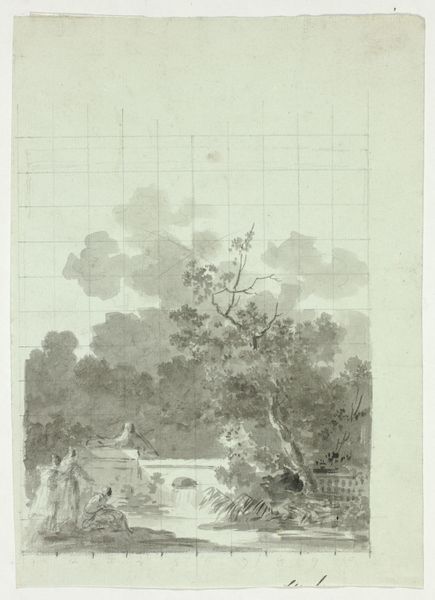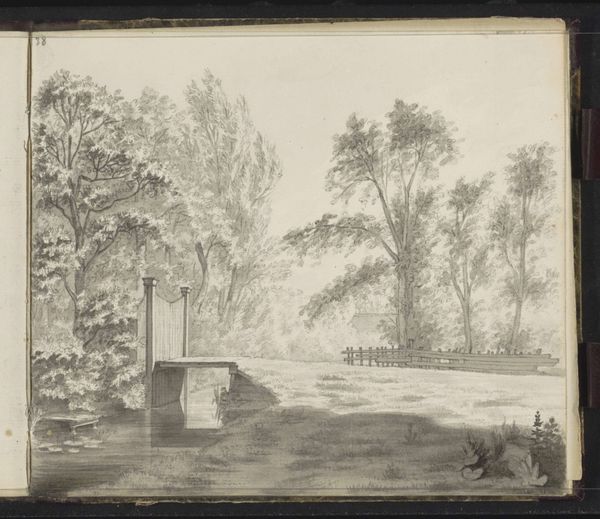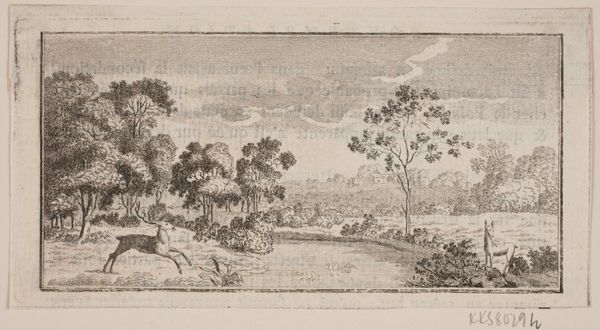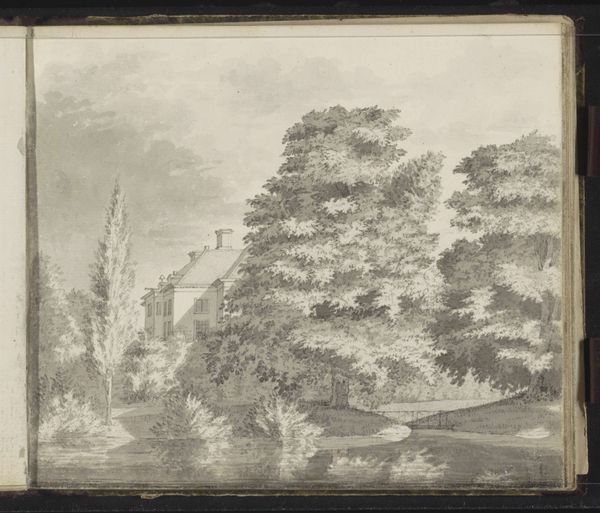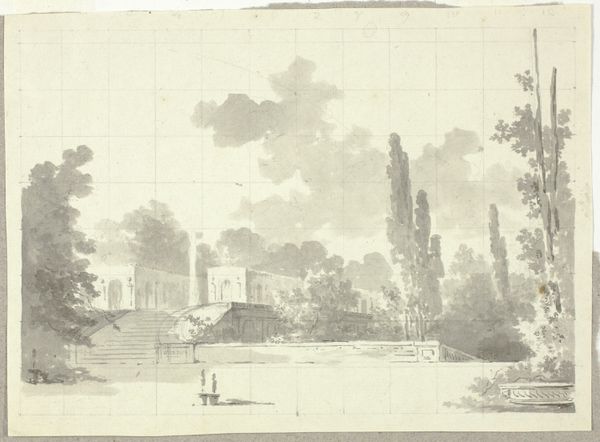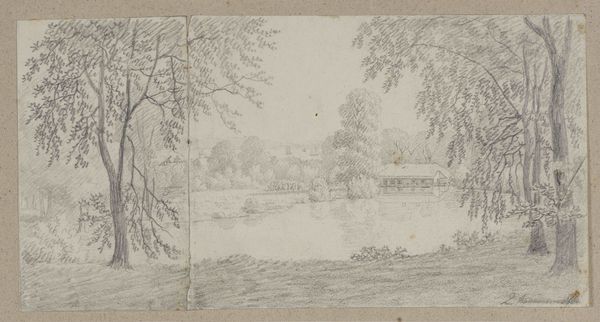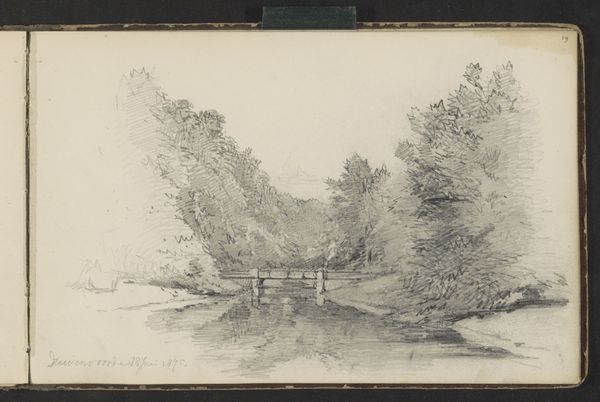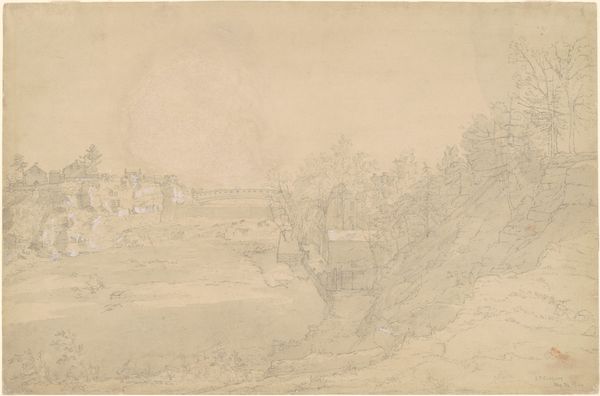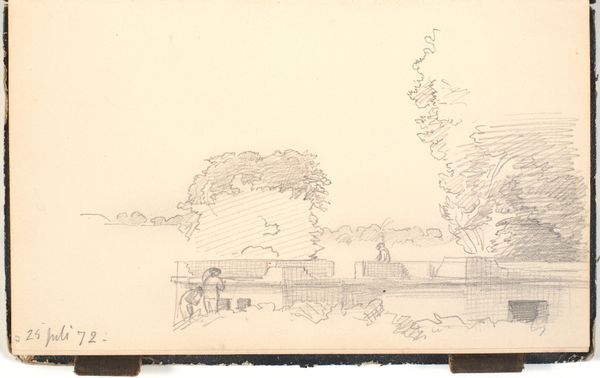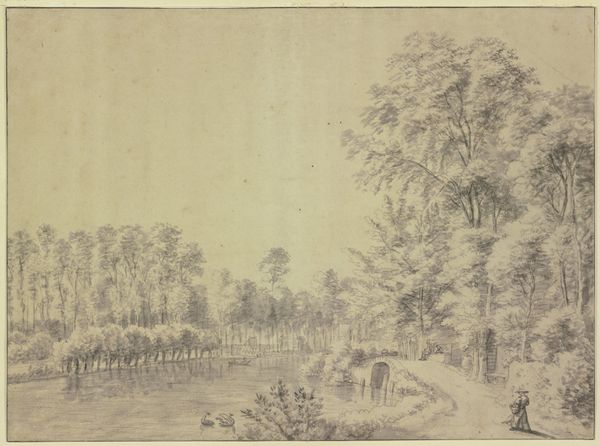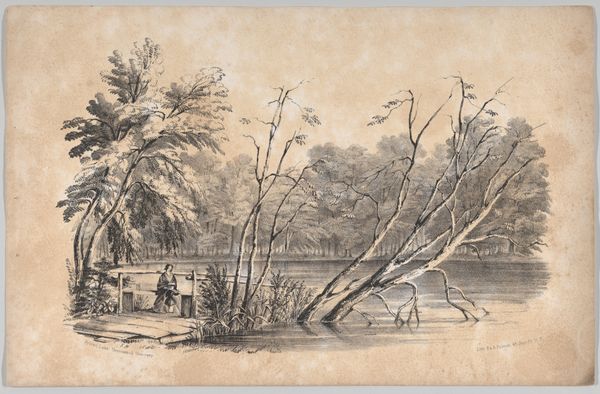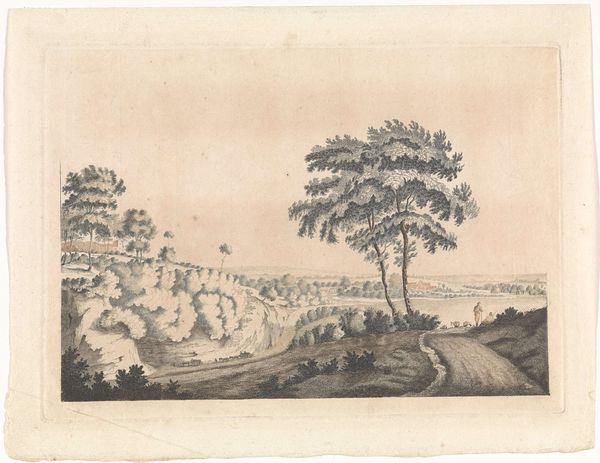
drawing, paper, fresco, ink, inorganic-material, chalk
#
drawing
#
landscape
#
figuration
#
paper
#
fresco
#
ink
#
inorganic-material
#
chalk
Dimensions: 296 × 1,454 mm (sheet - pieced)
Copyright: Public Domain
Curator: Antoine Pierre Mongin, the creator of the work before us, invites us into "Fantasy Landscape with Ruins and Figures". The date is unfortunately unknown, but it's a beautiful example of ink and chalk drawing on paper. It’s housed right here at the Art Institute. Editor: My initial impression is a scene of tranquil melancholy. The grayscale palette and the crumbling structures give a feeling of faded grandeur and reflection. Curator: Precisely. Consider the use of classical motifs: the reclining figure in the lower left, the herds of deer, the distant architectural remains. They speak of a longing for a lost, perhaps idealized, past. These motifs echo through art history. Editor: I can't help but think about who gets to mourn a "lost past". We're drawn into a fantasy of a generalized ancient time, but what stories, what marginalized experiences, are being erased by this kind of universalized narrative of nostalgic remembrance? Who’s included and who is decidedly not? Curator: An important point to raise. Mongin presents us with an image steeped in European traditions, drawing heavily from established symbolic orders. Think of the ruin itself as a symbol. The crumbling architecture, repeated in landscape after landscape through centuries. Editor: Ruin, indeed, suggesting power, loss, time… all the classic tropes! The way this is rendered also softens any clear historical message or specific identity. It presents us, perhaps, with universalized 'tragedy' absent actual specifics. Curator: Perhaps it’s about memory. Collective memory. How certain symbols resonate across generations. The careful execution in chalk and ink provides that softened touch. Notice how that gray links foreground and distant hills, human forms, the trees, all as variations of similar underlying loss? Editor: Yes, a melancholic sense. However, if that sense can also veil and obscure social truths by evoking feelings in the realm of the archetypal, then this beautiful vista does real historical damage even through its calm, soft washes. Art, after all, always has politics embedded within. Curator: It reminds us that visual forms carry emotional weight far beyond any single artist’s conscious intent, shaping collective identities and historical perceptions through evocative compositions like these. Editor: Precisely, so critical awareness of such traditions becomes essential. Thank you for tracing this visual continuity with me; a necessary critical lens to bear.
Comments
No comments
Be the first to comment and join the conversation on the ultimate creative platform.
